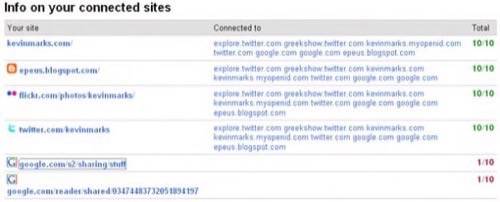Google today announced the release of a new API for graphing social net connections on the web at large. The Social Graph API is a way for developers of social applications to let users easily find data on their social connections across the open web. The information the API returns can be useful in helping users locate and add their friends when starting up at a new social application.

It was only a few weeks ago that Google announced that it had joined the DataPortability.org work group. It didn’t take them very long to make good on the promise of contributing to the cause of data portability, though I suspect that Social Graph API has been under development at Google since before they joined DataPortability.org.
The Social Graph API uses the same algorithms at play in Google’s search engine to discover how people are connected across the Internet. In fact, it only uses publicly available data — if it’s not on Google, the API won’t be able to find it — which Google says puts users in control of their own data since anything they don’t like showing up, they can change at the source level.
The API works by searching for connections between people based on how people are linked on social networks and via publicly available profiles and pages — i.e., if Marshall Kirkpatrick and I linked to each other on our personal blogs, or if we followed each other on Twitter, the Social Graph API might consider us friends because we have a strong connection. So, if I then sign up for a new social service, I can feed it links to my social presence elsewhere (like my blog or Twitter profile) and it will analyze those public connections and suggest to me that maybe I should be friends with Marshall on this new service because it looks like I’m friends with him elsewhere.

I spoke this morning to Google Developer Advocate Kevin Marks (whom we interviewed in December), and he showed me a demo using his blog as an example that shows how strong each of his various online presence points are connected. I.e., how his blog is connected to his Twitter account is connected to his Flickr page, etc.
As more and more users are beginning to suffer the effects of “social networking fatigue,” anything that helps automate and make easier the process of adding your existing connections to a new network is a useful tool. The Social Graph API could be an important part of the data portability movement in that it allows users to find and evaluate their public social connections and take control of that information.
Google has set up a Social Graph API group as well as provided developer documentation.










